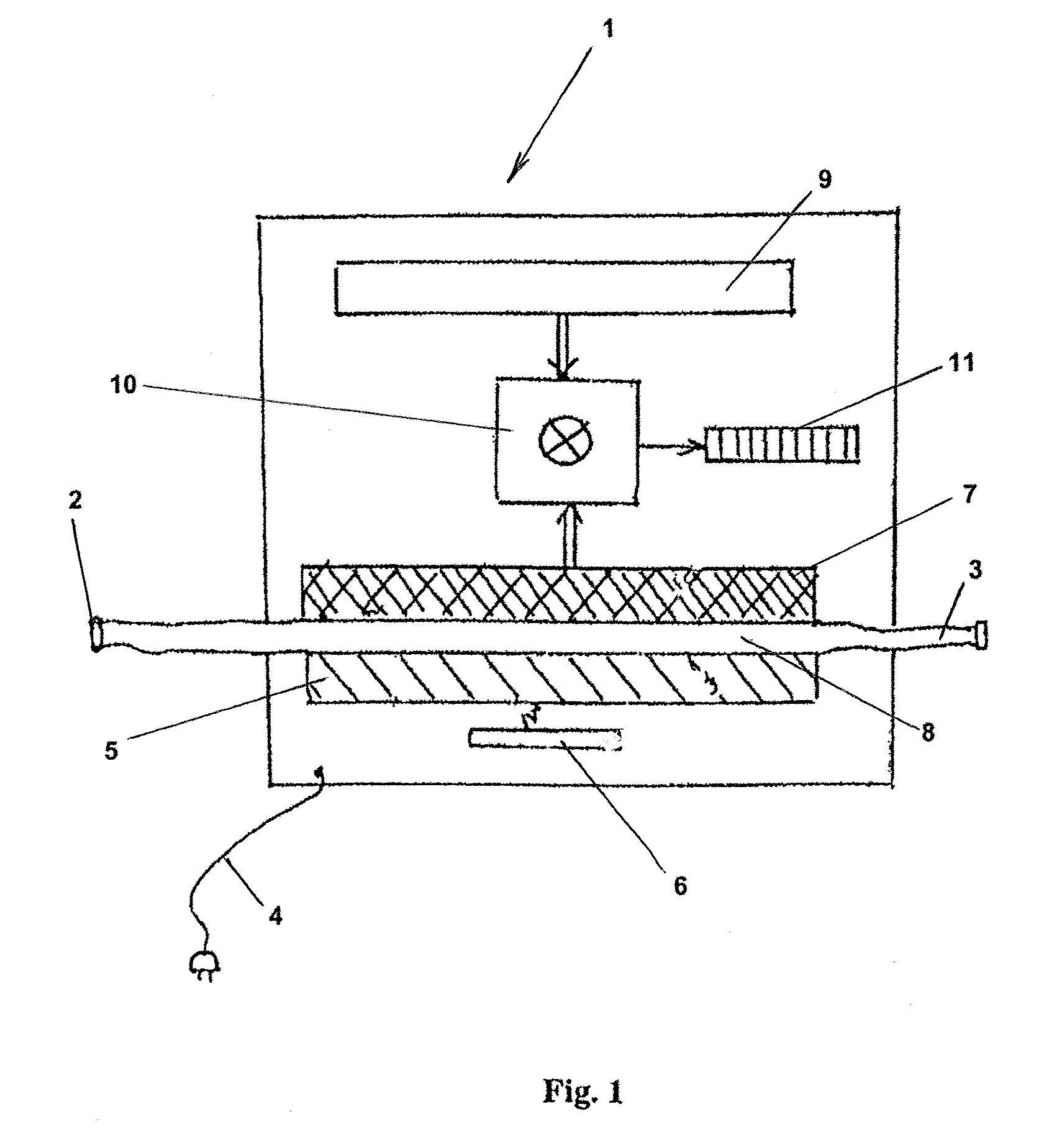Sensor for identifying at least one particle by means of raman-spectroscopy
a technology of raman-spectroscopy and sensors, which is applied in the direction of spectrometry/spectrophotometry/monochromators, instruments, optical radiation measurement, etc., can solve the problems of experimental setup and unsuitable wide-spread use of sensors, and achieve the effect of facilitating the integration and miniaturization of sensors
- Summary
- Abstract
- Description
- Claims
- Application Information
AI Technical Summary
Benefits of technology
Problems solved by technology
Method used
Image
Examples
Embodiment Construction
[0016]It is remarked that US-A1-2006 / 119853 relates to Raman spectroscopy, in particular surface enhanced Raman spectroscopy (“SERS”). This document teaches the use of a thin metal film deposited on a dielectric substrate patterned in the form of a photonic crystal to extract a SERS-signal from low concentrations of analyte molecules embedded inside the photonic crystal lattice, therewith enhancing the Raman-signal.
[0017]The beauty of the invention is however that the photonic crystal has cavities that act both as trapping units for the particles to be identified, as well as means for providing Raman-excitation to said particles without the need to apply and excite a metal's surface or a metalloelectric film on a substrate's surface. The energy required herefore stems from the laser-beam source that is directly linked to the photonic crystal and that resonantly excites electromagnetic modes of the cavities of the photonic crystal. Through the use of multiple cavities the chance of a...
PUM
 Login to View More
Login to View More Abstract
Description
Claims
Application Information
 Login to View More
Login to View More - R&D
- Intellectual Property
- Life Sciences
- Materials
- Tech Scout
- Unparalleled Data Quality
- Higher Quality Content
- 60% Fewer Hallucinations
Browse by: Latest US Patents, China's latest patents, Technical Efficacy Thesaurus, Application Domain, Technology Topic, Popular Technical Reports.
© 2025 PatSnap. All rights reserved.Legal|Privacy policy|Modern Slavery Act Transparency Statement|Sitemap|About US| Contact US: help@patsnap.com


